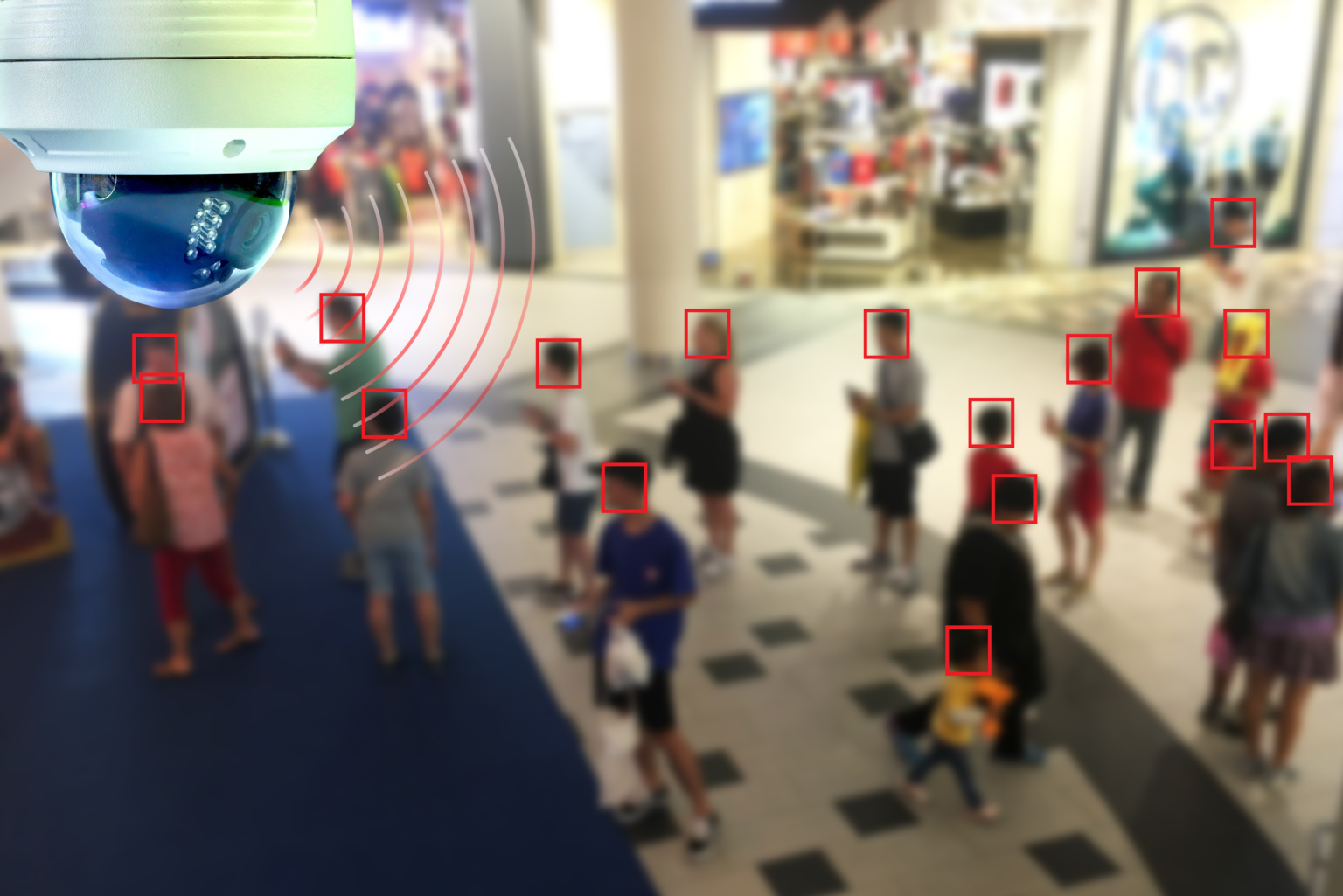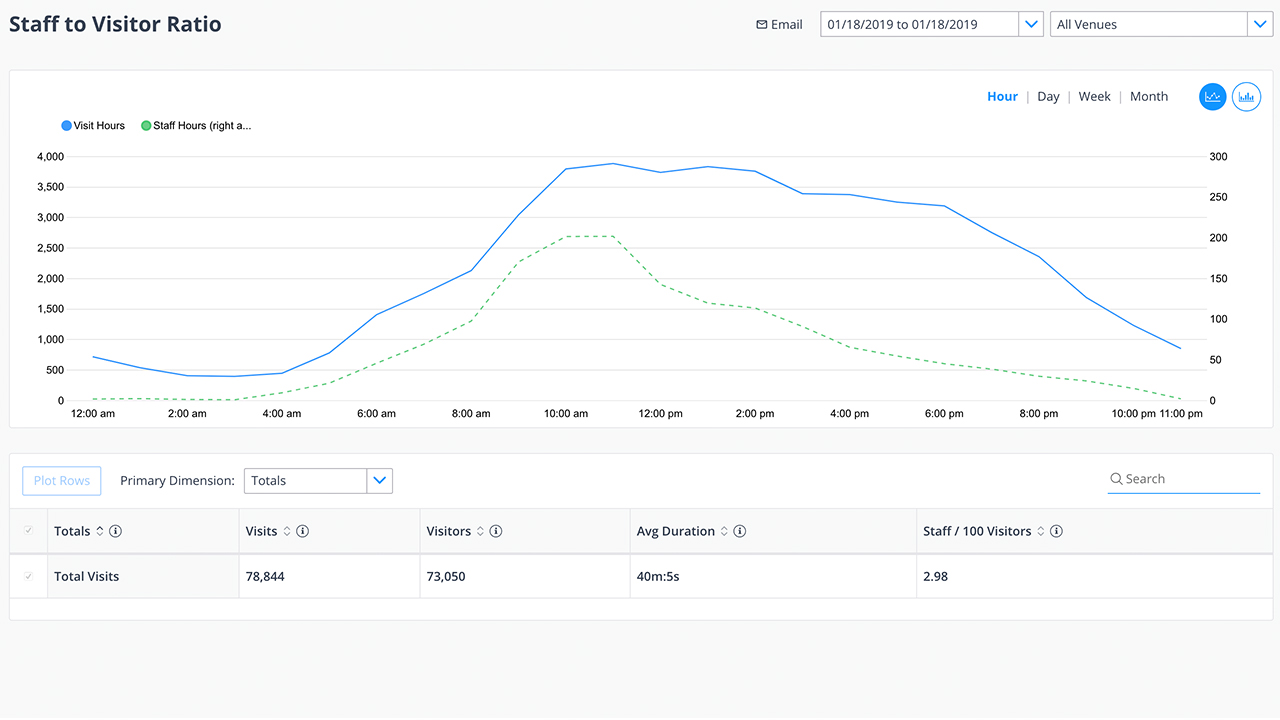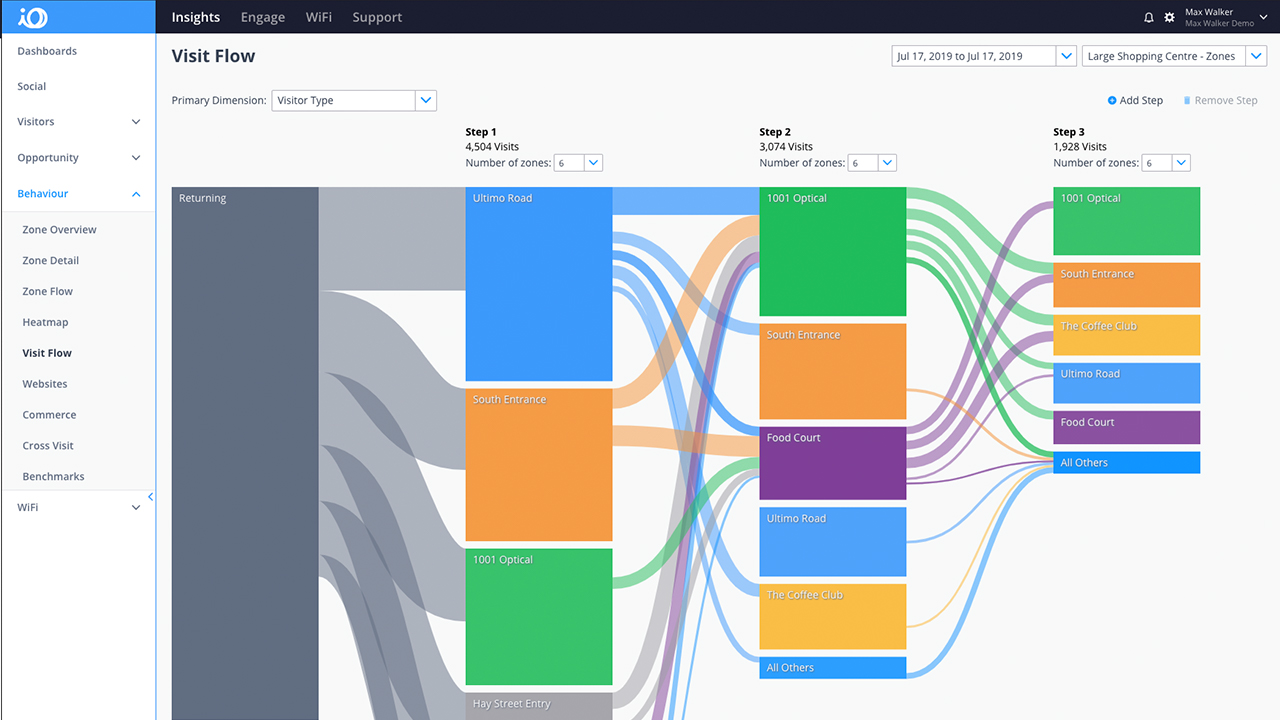How Motion Analytics Transforms Retail & Customer Experience
.jpg?length=1200&name=blog-header-1200x600%20(15).jpg)
Discover how motion analytics is reshaping retail experiences. Dive deep into actionable insights that enhance operations and user experience.
Unlocking the Future of Retail with Motion Analytics
Motion analytics is the silent game-changer in the ever-evolving retail landscape, breathing life into brick-and-mortar experiences in a digital age.
Smart motion technology like 3D cameras, LiDAR, and AI capture specialized data, offering unparalleled insights. From tailoring store layouts to managing bustling crowds, understanding movement has never been more crucial.
In fact, a McKinsey & Company study highlights the necessity of reimagining physical customer experiences. And motion analytics stands front and center in this transformation.
Keep reading to discover how this tech is revolutionizing retail, ensuring optimized customer journeys, enhanced safety, and data-driven success, all while respecting privacy.
What is Motion Analytics?
Motion analytics is a data analysis method that tracks people and objects’ movements. Using sensors and software, it identifies patterns, provides real-time insights, predicts behaviors, and optimizes processes. This technology has retail, transportation, smart cities, and sports applications.
Key Features of Motion Analytics:
- Real-time Data Collection: Instantly capture movement as it happens.
- Pattern Recognition: Identify common routes, behaviors, and trends.
- Behavioral Insights: Offers a deeper look into how and why movements occur.
- Predictive Analytics: Forecast potential future behaviors based on historical data.
Real-World Applications:
- Retail Spaces: Understand shopper paths, dwell times, and ways to optimize store layouts.
- Transportation Hubs: Analyze foot traffic and flow to maximize commuting experiences.
- Smart Cities: Manage pedestrian and vehicle flows to ensure safety and efficiency.
- Sporting Events: Analyzing player movements to improve performance.
The Benefits of Motion Analysis in Retail
Retailers continually seek innovative ways to enhance customer experiences, streamline operations, and boost sales.
One game-changing tool making waves in the retail sector is motion analysis software and technology. Let’s dive into its transformative benefits:
Enhanced Customer Experience
- Optimized Store Layouts: By understanding the movement patterns of shoppers, stores can arrange products and aisles more efficiently.
- Reduced Wait Times: Monitoring checkout lines and high-traffic areas enables swift staff reallocation during peak times.
- Personalized Marketing: Recognizing frequent paths and dwell points allows for tailored promotions and advertisements.
Data-Driven Decision Making
- Trend Recognition: Retailers can identify popular products and areas. This leads to smarter inventory and display choices.
- Peak Traffic Analysis: Your store can adjust staffing and promotions accordingly by pinpointing high traffic times.
- Behavioral Insights: Gaining deeper knowledge about shopper habits can guide future store strategies and product placements.
Increased Sales and Profitability
- Upselling Opportunities: Analyzing motion data can help retailers place complementary products together, encouraging customers to buy more.
- Effective Promotions: With a better grasp of shopper behavior, retailers can run timely and relevant promotions.
- Inventory Management: Real-time motion data assists in keeping high-demand products in stock and minimizes overstock of less popular items.
Improved Security
- Theft Prevention: Monitoring movement patterns can detect suspicious behaviors, reducing shoplifting.
- Staff Accountability: Ensuring employees are in the right places at the right times enhances productivity and service.
In a nutshell, motion analysis in retail isn’t just about tracking movement. It’s a strategic tool guiding retailers to actionable insights, fostering a seamless shopping experience, and driving business success.
In the modern retail landscape, staying ahead means embracing smart motion technology.
Also Read: How Data Can Help Retail Property Managers Make Smarter Leasing Decisions
Motion Technology Used in Retail

The retail sector has embraced intelligent motion capture technology, propelling customer experience and operational efficiency to new heights.
These motion technologies have revamped the retail experience from the entrance to the checkout counter.
Here is the most prominent technology used to capture motion analytics:
Optical Sensor Technology: 3D Cameras
A 3D motion detection camera captures a three-dimensional view of a space, allowing for depth perception and spatial analysis.
Benefits in Retail:
- Precise people counting and queue management.
- Analyze customer reach and interaction with products on shelves.
LiDAR (Light Detection and Ranging)
LiDAR systems emit laser beams and measure the time the beam returns after reflecting off an object. This technology enables highly accurate distance and spatial measurements.
Benefits in Retail:
- Accurate foot traffic analysis, especially in crowded environments.
- Shelf inventory management by detecting empty shelf spaces.
- Navigation assistance in large retail stores or malls.
Motion Sensors
Motion sensor technology uses devices to detect and respond to changes in position or movement in their vicinity.
Benefits in Retail:
- Automatic door openings.
- Energy savings by controlling lighting based on occupancy.
- Alarms for restricted areas or after-hours motion detection.
CCTV (Closed-Circuit Television)
CCTV is a long-standing technology for surveilling specific areas via video cameras.
Benefits in Retail:
- Theft prevention and security enhancement.
- Employee monitoring for productivity and compliance.
- Analyzing customer behavior, like time spent in specific aisles.
Incorporating these motion technologies into retail operations provides data-driven insights and fosters a smarter, more interactive, and secure shopping environment.
As the retail industry continues to evolve, leveraging these tools will also become increasingly pivotal for stores to remain competitive and cater to the modern shopper’s needs.
Note: Using these motion analytics technologies ensures privacy. They do not use personally identifiable information (PII) or store image data. People’s privacy in physical spaces remains protected.
Also Read: Guest WiFi for Retail: 7 Ways Guest Access Drives Success
Motion Analytics Trends in Retail
There are several broad areas where motion analytics can improve customer experience for retail tenants and retail property managers.
The following are motion analysis trends we see revolutionizing the shopper experience:
Inventory Management
Motion analytics streamlines retail operations from delivery to checkout. It tracks goods from arrival to sale using camera technology, offering a clear view of the supply chain.
Visibility of the entire supply and sale chain allows retailers to proactively manage inventory while aligning with fluctuating customer demand.
Carpark Automation
Motion technology revolutionizes parking operations by replacing manual methods with automated processes. This innovation enhances efficiency by identifying open parking spots and guiding drivers.
Furthermore, smart motion technology can alert staff about the arrival of “Click and Collect” customers. This significantly reduces vehicle wait times and increases customer throughput.
Customer Service Asset Utilization
Using data on customer service asset usage can enhance the placement and layout of items like kiosks, ticket machines, and service desks.
Analyzing customer interactions with these assets guides optimal positioning and resourcing. This ensures cost-effective, improved customer experiences.
Staff Optimization
Motion analytics evaluates customer behaviors and patterns, aligning them with staff schedules. Venue operators can strategize for enhanced service delivery by understanding customer needs and locations.
You can also observe how visitor traffic compares to staffing levels throughout the day, week, or season within the Skyfii platform.

Improved Health and Safety
Amid the pandemic, camera analytics emerged to ensure social distancing and monitor occupancy. Beyond that, smart cameras detect safety hazards like fires, spills, or falls.
Camera analytics also assists emergency services by providing real-time data on incidents, enabling efficient and effective response strategies.
Optimize Tenancy Mix
Motion analytics assists retail managers in discerning customer preferences and complementary retail categories.
For example, a motion detection camera can track popular customer routes within shopping centers. This aids in predicting the ideal tenancy mix for optimal visitor engagement.
The Skyfii platform can observe popular customer travel paths within a shopping center to help predictively model the most effective tenancy mix.

Queue Management
Smart motion technology, including AI-enabled cameras and LiDAR, adeptly measures queue times, even in crowded areas with intersecting lines.
Predicting queue lengths and durations aids in creating efficient spaces like food courts, kiosks, and experiential zones.
Awareness of real-time wait times also allows for rapid response to demand spikes. For example, staff can receive notifications if queues become too long. Then, they can step in to maintain a positive customer experience.
Also Read: 4 Smart Retail Trends: Data Driving Efficiency and Growth
The Takeaway
As retail evolves, motion analytics enhances the in-person shopping experience. It deciphers customer behavior, setting brick-and-mortar stores apart from online shopping.
This insight also drives an ambiance that lures customers, offering unique experiences they can’t find online. Motion analytics not only bolsters operations and safety but also ensures a top-notch customer journey, all while upholding privacy standards.
Ready to Accelerate Your Retail Business with Smart Motion Technology?
In today’s data-driven age, understanding the movement and behavior of people and objects is transformative.
Motion analytics is more than just tracking movement. It’s about diving deep into that movement, understanding the “why” behind the “how.” Then, leveraging those insights to optimize experiences, improve processes, and make data-informed decisions.
And with the rise of smart technology, the potential of motion analytics continues to expand, bringing fresh opportunities and solutions.
Skyfii’s uniform platform simplifies this data so you can make informed decisions that drive results.
